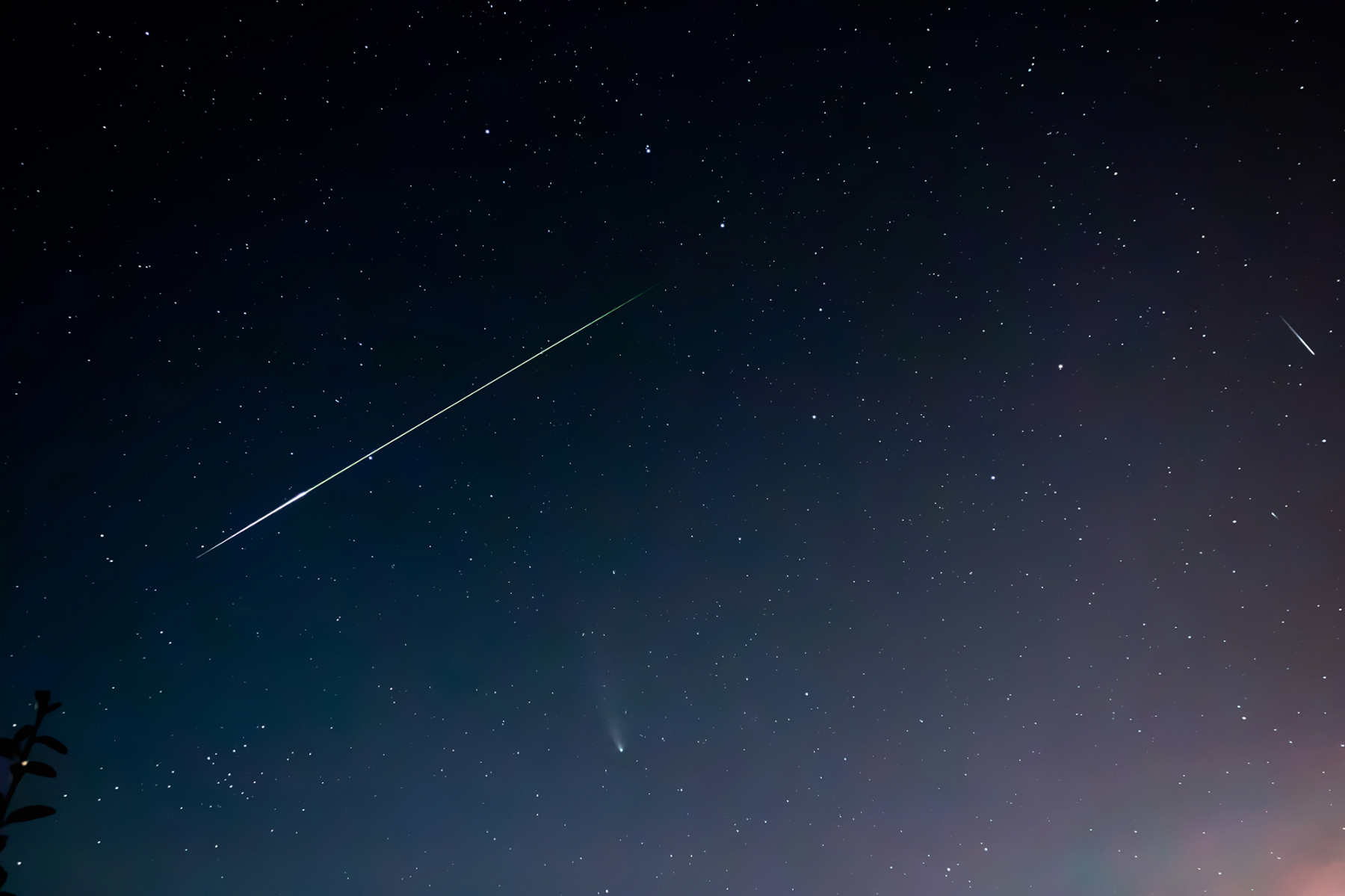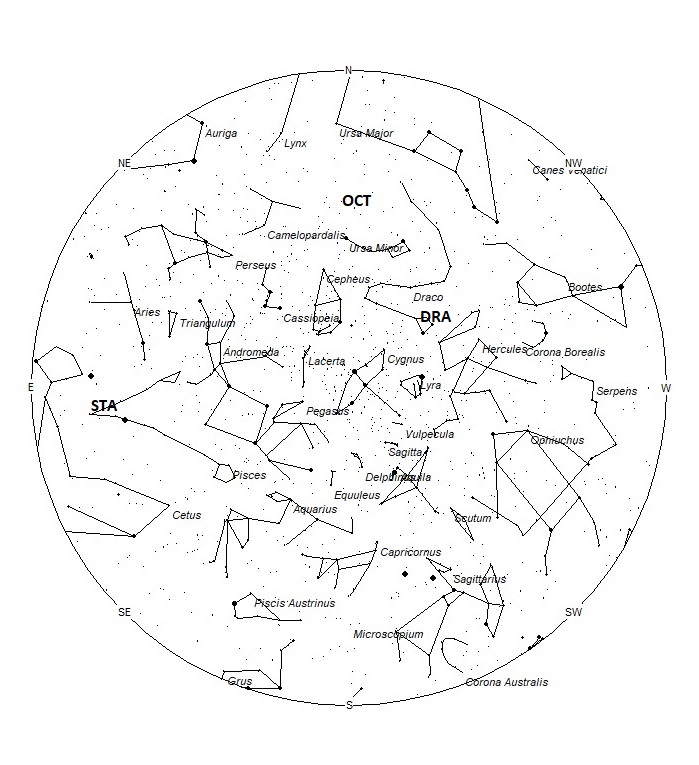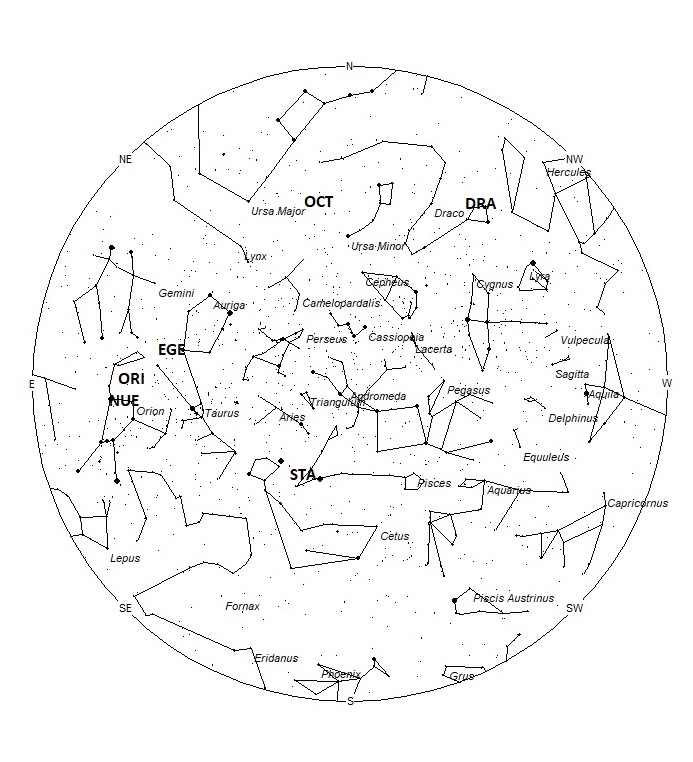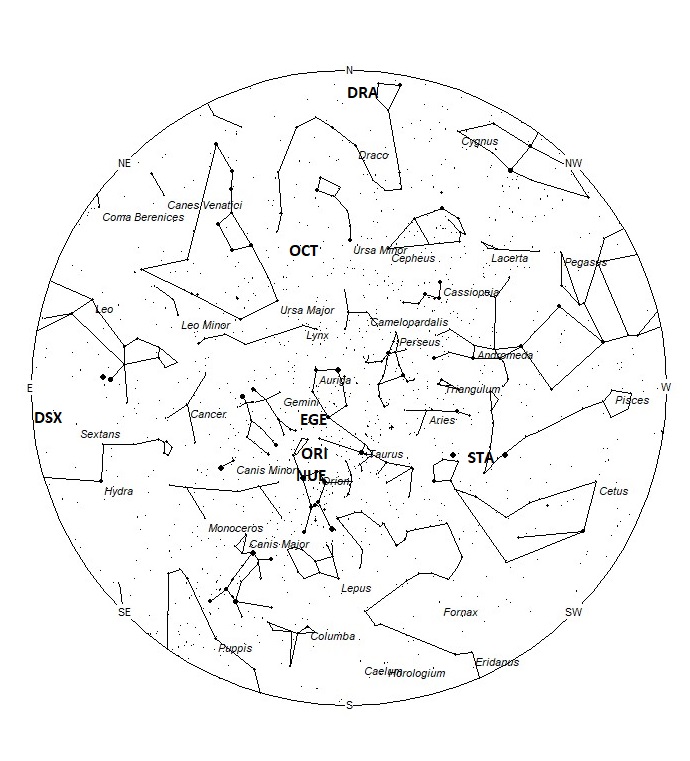 Sylvain Lechevalier was photographing Comet Neowise when not one, but two meteors shot through the field of view. The photograph was taken at 00:01 CEST on July 27, 2020, from near Montbazon Centre-Val de Loire, France. Credit: Sylvain Lechevalier
Sylvain Lechevalier was photographing Comet Neowise when not one, but two meteors shot through the field of view. The photograph was taken at 00:01 CEST on July 27, 2020, from near Montbazon Centre-Val de Loire, France. Credit: Sylvain LechevalierMeteor activity increases in October when compared to September. A major shower (the Orionids) is active all month long and there are also many minor showers to be seen. Both branches of the Taurids become more active as the month progresses, providing slow, graceful meteors to the nighttime scene. The Orionids are the big story of the month reaching maximum activity on the 21st. This display can be seen equally well from both hemispheres which definitely helps out observers located in the sporadic-poor southern hemisphere this time of year. Sporadic activity is still good as seen from the northern hemisphere. In the southern hemisphere though, the sporadic activity is near its annual nadir.
During this period, the moon reaches its last quarter phase on Friday October 9th. At that time, the moon is located 90 degrees west of the sun and rises near 23:00 local daylight saving time (LDST). For this weekend and most of next week the bright waning gibbous moon will rise during the evening hours and will spoil any chance of seeing much meteor activity. Toward the end of the week a window of dark will will occur between dusk and moon rise. Unfortunately meteor activity is near its lowest point of the night during this time. The estimated total hourly meteor rates for evening observers this week is near 3 as seen from mid-northern latitudes and 2 as seen from tropical southern locations (25S). For morning observers, the estimated total hourly rates should be near 16 as seen from mid-northern latitudes (45N) and 13 as seen from tropical southern locations (25S). Rates are reduced due to bright moonlight. The actual rates will also depend on factors such as personal light and motion perception, local weather conditions, alertness, and experience in watching meteor activity. Note that the hourly rates listed below are estimates as viewed from dark sky sites away from urban light sources. Observers viewing from urban areas will see less activity as only the brighter meteors will be visible from such locations.
The radiant (the area of the sky where meteors appear to shoot from) positions and rates listed below are exact for Saturday night/Sunday morning October 3/4. These positions do not change greatly day to day so the listed coordinates may be used during this entire period. Most star atlases (available at science stores and planetariums) will provide maps with grid lines of the celestial coordinates so that you may find out exactly where these positions are located in the sky. A planisphere or computer planetarium program is also useful in showing the sky at any time of night on any date of the year. Activity from each radiant is best seen when it is positioned highest in the sky, either due north or south along the meridian, depending on your latitude. It must be remembered that meteor activity is rarely seen at the radiant position. Rather they shoot outwards from the radiant, so it is best to center your field of view so that the radiant lies at the edge and not the center. Viewing there will allow you to easily trace the path of each meteor back to the radiant (if it is a shower member) or in another direction if it is a sporadic. Meteor activity is not seen from radiants that are located far below the horizon. The positions below are listed in a west to east manner in order of right ascension (celestial longitude). The positions listed first are located further west therefore are accessible earlier in the night while those listed further down the list rise later in the night.
These sources of meteoric activity are expected to be active this week.
.
Details of each source will return next week when viewing conditions are more favorable.
| SHOWER | DATE OF MAXIMUM ACTIVITY | CELESTIAL POSITION | ENTRY VELOCITY | CULMINATION | HOURLY RATE | CLASS |
| RA (RA in Deg.) DEC | Km/Sec | Local Daylight Saving Time | North-South | |||
| Draconids (DRA) | Oct 07 | 17:32 (270) +56 | 21 | 18:00 | <1 – <1 | III |
| Southern Taurids (STA) | Nov 03 | 01:50 (028) +08 | 27 | 02:00 | 2 – 2 | II |
| Orionids (ORI) | Oct 21 | 05:38 (085) +15 | 66 | 05:00 | 3 – 3 | I |
| epsilon Geminids (EGE) | Oct 11 | 05:39 (085) +28 | 70 | 05:00 | <1 – <1 | II |
| nu Eridanids (NUE) | Sep 24 | 05:43 (086) +08 | 67 | 05:00 | <1 – <1 | IV |
| Daytime Sextantids (DSX) | Sep 28 | 10:31 (158) -03 | 33 | 10:00 | <1 – <1 | IV |
| October Camelopardalids (OCT) | Oct 05 | 10:57 (164) +78 | 47 | 11:00 | <1 – <1 | IV |
 American Meteor Society
American Meteor Society



I just saw one fall at about 1845 as I was walking back into work it was in the western sky from Morton, Illinois
Took the dog out at 5:45 am and immediately saw a “shooting star” in the perfectly clear south western sky. Always impressed!